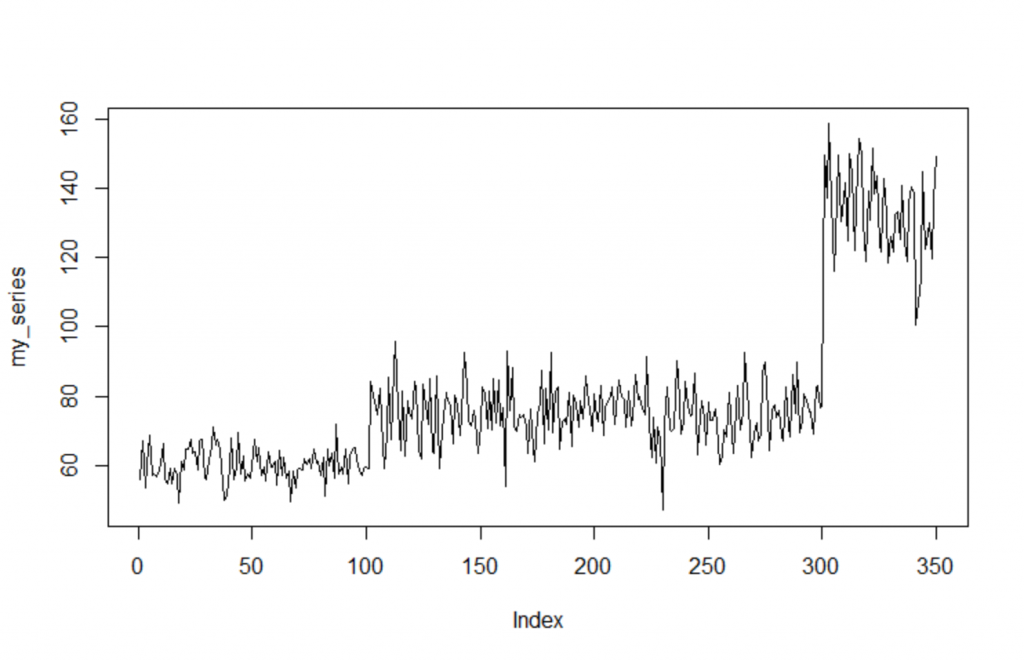In this post, we will provide an example of how you can detect changes in the distribution across time. For example, let’s say that we monitor the heart rate of a person with the following states:
- Sleep: Normal (60,5)
- Awake: Normal (75,8)
- Exercise: Normal (135, 12)
Let’s generate this data:
set.seed(5) sleep<-rnorm(100, 60, 5) awake<-rnorm(200, 75, 8) exercise<-rnorm(50, 135, 12) my_series<-c(sleep, awake, exercise) plot(my_series, type='l')

We can work with two different packages, the changepoint and the bcp.
Detect the Changes with the changepoint
We will try to test the changes in mean.
library(changepoint) # change in mean ansmean=cpt.mean(my_series, method = 'BinSeg') plot(ansmean,cpt.col='blue') print(ansmean)
Output:
Class 'cpt' : Changepoint Object
~~ : S4 class containing 14 slots with names
cpts.full pen.value.full data.set cpttype method test.stat pen.type pen.value minseglen cpts ncpts.max param.est date version
Created on : Fri Mar 05 16:01:12 2021
summary(.) :
----------
Created Using changepoint version 2.2.2
Changepoint type : Change in mean
Method of analysis : BinSeg
Test Statistic : Normal
Type of penalty : MBIC with value, 17.5738
Minimum Segment Length : 1
Maximum no. of cpts : 5
Changepoint Locations : 101 300 303 306 324
Range of segmentations:
[,1] [,2] [,3] [,4] [,5]
[1,] 300 NA NA NA NA
[2,] 300 101 NA NA NA
[3,] 300 101 324 NA NA
[4,] 300 101 324 303 NA
[5,] 300 101 324 303 306
For penalty values: 168249.2 15057.6 1268.036 373.3306 373.3306 
As we can see, it detected 4 distributions instead of 3.
Detect the Changes with the bcp
bcp() implements the Bayesian change point analysis methods given in Wang and Emerson (2015),
of which the Barry and Hartigan (1993) product partition model for the normal errors change point
problem is a specific case.
library(bcp) bcp.1a <- bcp(my_series) plot(bcp.1a, main="Univariate Change Point Example") legacyplot(bcp.1a)

As we can see, it returns the posterior Mean as well as the probability of a change at that particular step. We can set a threshold like 30%. It correctly detected the two changes in the distributions at the right time (step=100 and step=300)




3 thoughts on “Detect the Changes in Timeseries Data”
strucchange package is also woth mentioning
Note that for the changepoint analysis you are using the cpt.mean function but have data that has a changing variance too. You should be using the cpt.meanvar function – which gives 2 changepoints by default.
The cpt.mean function assumes a homogeneous variance and so if this is not the case then if the variance is larger you will get false changepoints added and if the variance is smaller then you may miss changepoints that are easy to spot by eye.
I agree. I tried to keep it simple.